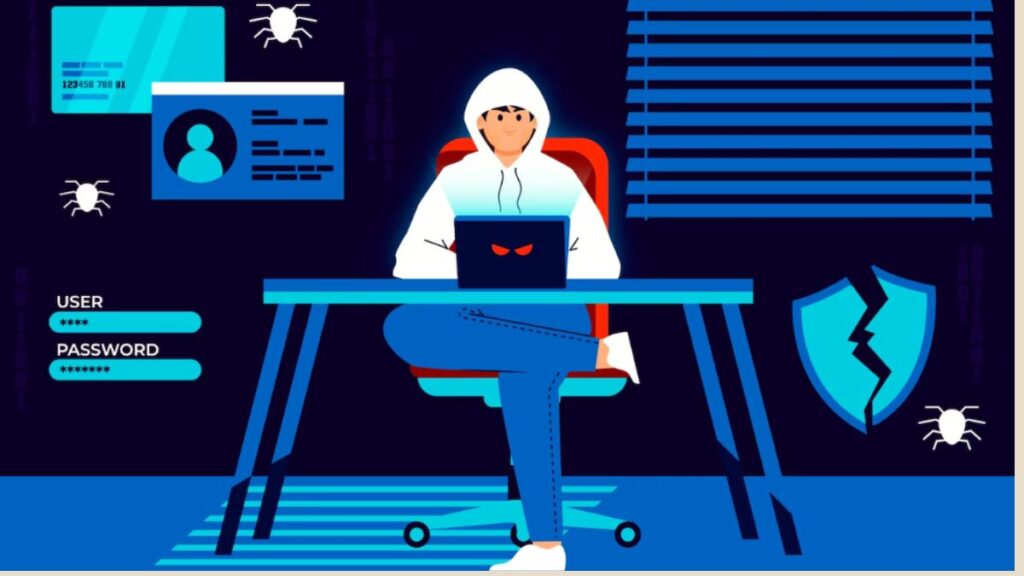The sophistication of modern malware has reached levels that would have seemed impossible just a decade ago. We’re no longer dealing with crude viruses that announce their presence through obvious system disruptions. Today’s malicious software operates with surgical precision, embedding itself deep within enterprise systems while masquerading as legitimate business processes, sometimes for months before detection.
This evolution demands a fundamental shift in how we conceptualize cybersecurity operations. The traditional approach of deploying defensive tools and hoping for the best has become not just inadequate, but dangerously naive. Modern enterprises require cybersecurity strategies that anticipate adversarial innovation, adapt to emerging threats in real-time, and neutralize sophisticated attacks before they can compromise critical business operations.
Understanding how advanced cybersecurity services detect and neutralize these threats provides crucial insight into the operational excellence that separates resilient organizations from those that become cautionary tales. The difference between effective and ineffective malware defense often comes down to strategic thinking about threat detection, operational discipline in response protocols, and the wisdom to invest in capabilities that address tomorrow’s threats, not yesterday’s problems.
The Evolution of Malware Sophistication
Contemporary malware represents the convergence of criminal innovation and technological advancement, creating threats that exploit both technical vulnerabilities and human behavioral patterns. Unlike historical malware that relied on obvious system exploitation, modern variants employ stealth techniques that mimic legitimate business processes while conducting malicious activities.
Advanced persistent threats exemplify this evolution perfectly. These sophisticated attacks establish long-term presence within target networks, conducting reconnaissance and data exfiltration over extended periods while carefully avoiding detection. The attackers invest significant resources in understanding target organizations, customizing their malware to blend seamlessly with normal business operations.
Fileless malware represents another dimension of this sophistication. These attacks operate entirely within system memory, leaving minimal forensic traces while maintaining full operational capability. Traditional detection methods that rely on file-based signatures become completely ineffective against these memory-resident threats, requiring fundamentally different detection approaches.
The emergence of artificial intelligence in malware development has accelerated this arms race dramatically. Machine learning algorithms now enable malware to adapt its behavior based on the defensive measures it encounters, creating polymorphic threats that can evolve faster than traditional signature-based detection systems can respond.
Behavioral Analysis and Pattern Recognition
Modern malware detection has moved beyond simplistic signature matching toward sophisticated behavioral analysis that identifies malicious activity based on deviation from established operational patterns. This approach recognizes that while malware code can be disguised or encrypted, malicious behavior patterns remain fundamentally identifiable through careful observation.
Network traffic analysis provides crucial insights into malware behavior. Legitimate business applications communicate with known servers using predictable protocols and data patterns. Malware, regardless of its sophistication, must eventually communicate with command and control infrastructure, creating detectable network anomalies that behavioral analysis can identify.
Endpoint behavior monitoring examines how applications interact with system resources, identifying suspicious activities like unauthorized file access, unusual network connections, or abnormal memory usage patterns. This approach proves particularly effective against fileless malware that might evade traditional detection methods but cannot avoid interacting with system resources.
User behavior analytics adds another layer of detection capability by establishing baseline patterns for individual users and identifying deviations that might indicate compromised credentials or insider threats. This human-centered approach recognizes that sophisticated malware often relies on compromised user accounts to conduct its operations.
The integration of these behavioral analysis techniques creates detection capabilities that remain effective even as malware continues evolving. Rather than relying on specific threat signatures, behavioral analysis identifies the fundamental activities that malicious software must perform to achieve its objectives.
Real-Time Threat Intelligence Integration
Effective malware detection requires constant awareness of the evolving threat landscape, incorporating intelligence from global threat research, industry-specific attack patterns, and organizational vulnerability assessments. This intelligence integration enables proactive defense strategies that anticipate emerging threats rather than simply reacting to known attacks.
Threat intelligence feeds provide real-time information about newly discovered malware variants, attack techniques, and compromised infrastructure. This information enables security systems to update their detection capabilities continuously, maintaining effectiveness against rapidly evolving threats.
Industry-specific threat intelligence proves particularly valuable because attackers often target multiple organizations within the same sector using similar techniques. Information sharing between organizations and industry security consortiums creates collective defense capabilities that benefit all participants.
Organizational threat modeling incorporates internal vulnerability assessments with external threat intelligence to identify specific risks that generic security solutions might overlook. This customized approach ensures that detection capabilities align with actual organizational risk profiles rather than theoretical threat models.
The velocity of threat intelligence integration often determines detection effectiveness. Organizations that can incorporate new threat information within hours maintain significant advantages over those that require days or weeks to update their defensive capabilities.
Machine Learning and Artificial Intelligence
The application of machine learning to malware detection has fundamentally transformed the speed and accuracy of threat identification. These systems can process vast amounts of data, identify subtle patterns that would escape human analysis, and adapt their detection capabilities based on emerging threat characteristics.
Supervised learning models trained on known malware samples can identify previously unknown threats that share characteristics with historical attacks. These models prove particularly effective at detecting malware families and variants that employ similar techniques or target similar vulnerabilities.
Unsupervised learning approaches excel at identifying completely novel attack patterns that don’t match historical threat data. These systems establish baseline models of normal system behavior and flag significant deviations that might indicate sophisticated attacks.
Ensemble methods that combine multiple machine learning approaches provide robust detection capabilities that remain effective even when individual models encounter limitations. This layered approach prevents attackers from defeating detection systems by optimizing their malware to evade specific detection algorithms.
The continuous learning capability of modern AI systems enables detection accuracy to improve over time as they encounter new threats and receive feedback on their performance. This adaptive capability proves crucial in environments where threats evolve rapidly and unpredictably.
Automated Response and Neutralization
Modern cybersecurity services have moved beyond simple detection toward automated response capabilities that can neutralize threats faster than human analysts could respond. This automation proves crucial when dealing with sophisticated malware that can cause significant damage within minutes of successful infiltration.
Automated containment systems can instantly isolate infected systems from network resources, preventing malware from spreading to additional systems while preserving forensic evidence for detailed analysis. This immediate response capability often determines whether a malware incident remains localized or becomes an enterprise-wide crisis.
Dynamic analysis environments, often called sandboxes, provide safe spaces where suspicious files and processes can be executed and analyzed without risking production systems. These environments reveal malware behavior patterns that static analysis might miss while providing detailed intelligence about attack capabilities and objectives.
Orchestrated response workflows coordinate multiple security tools and processes to address different aspects of malware incidents simultaneously. These workflows might include evidence collection, system isolation, threat analysis, and stakeholder notification, all executing in parallel to minimize response time and maximize effectiveness.
The integration of automated response with human expertise creates hybrid defense capabilities that combine machine speed with human judgment. Critical decisions remain under human control while routine response actions execute automatically, optimizing both response time and decision quality.
Forensic Analysis and Attribution
Effective malware neutralization extends beyond immediate threat removal to include comprehensive forensic analysis that provides insights into attack methods, objectives, and potential attribution. This analysis proves crucial for preventing future attacks and supporting legal or regulatory response requirements.
Digital forensics techniques preserve evidence while conducting detailed analysis of malware behavior, system modifications, and data access patterns. This analysis often reveals the full scope of compromise and identifies additional systems or data that might have been affected.
Attack attribution analysis examines malware characteristics, infrastructure usage, and targeting patterns to identify potential threat actors. While definitive attribution often remains challenging, this analysis provides valuable intelligence about threat actor capabilities and objectives.
Timeline reconstruction creates detailed chronologies of malware activity, identifying when systems were compromised, what actions were taken, and how the attack progressed through organizational systems. This information proves crucial for understanding attack impact and preventing similar future incidents.
The insights gained from forensic analysis feed back into detection and prevention systems, creating continuous improvement cycles that strengthen organizational defenses over time. Organizations that invest in comprehensive forensic capabilities typically demonstrate superior resilience against repeat attacks.
Integration with Business Operations
Successful malware detection and neutralization requires seamless integration with business operations, ensuring that security measures protect critical assets without unnecessarily disrupting legitimate business activities. This integration challenges traditional security approaches that often prioritized protection over operational efficiency.
Risk-based security controls align protection measures with business asset values and operational requirements. Critical systems receive enhanced protection and monitoring, while less critical resources receive appropriate but less intensive coverage.
Business continuity planning incorporates malware response procedures into broader operational resilience strategies. This planning ensures that organizations can maintain essential business functions even during significant security incidents.
Stakeholder communication protocols define how malware incidents get reported to different organizational constituencies, including executive leadership, legal counsel, regulatory authorities, and affected customers. Clear communication processes prove crucial for maintaining stakeholder confidence during crisis periods.
The most effective companies providing cyber security services understand these business integration requirements and design their solutions to enhance rather than impede business operations. This business-centric approach creates security programs that receive strong organizational support and achieve superior effectiveness.
Conclusion
The battle against sophisticated malware requires more than advanced technology—it demands strategic thinking that anticipates adversarial innovation while maintaining operational excellence under pressure. Organizations that understand this reality invest in comprehensive detection and neutralization capabilities that address current threats while adapting to future challenges.
Success in this environment requires partnerships with security providers who combine technical expertise with deep understanding of business operations and regulatory requirements. The most effective approaches treat malware defense as an integrated business capability rather than a standalone technical function.
For organizations seeking to establish world-class malware defense capabilities, partnering with experienced providers like Devsinc ensures access to sophisticated security expertise while maintaining the operational flexibility necessary to adapt to evolving threats. The future belongs to organizations that can seamlessly integrate advanced threat detection with business resilience, creating enterprises capable of thriving despite increasingly sophisticated adversarial challenges.







